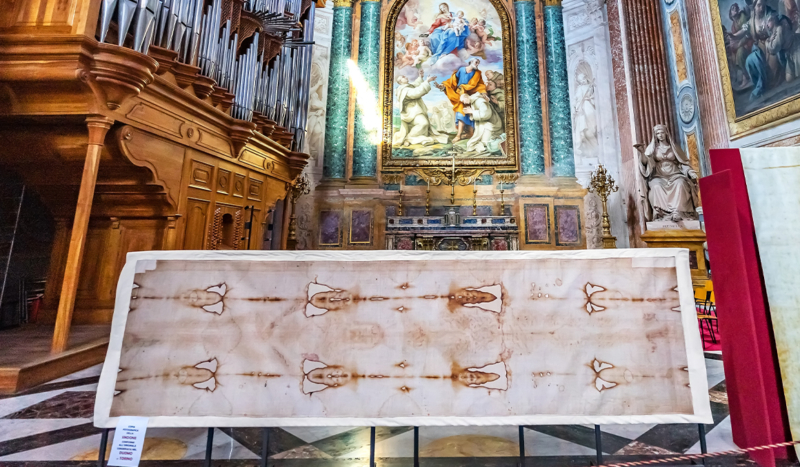
Adobe Stock
CV NEWS FEED // A study published this summer by an Italian researcher has found that bloodstains on the Shroud of Turin support the popular belief that the cloth was indeed used to wrap Jesus’ body during his burial.
Giulio Fanti, a professor of mechanical and thermal measurements at the University of Padua, conducted the study of the Shroud at both “macroscopic and microscopic” levels, studying the appearances of the bloodstains and their compositions.
Fanti wrote in his study report that all the results of the study “are consistent with the description of Jesus Christ in the Holy Bible and, in particular, within the four Canonical Gospels.”
Our Sunday Visitor reported that the Catholic Church has never formally confirmed the Shroud as Jesus’ true burial cloth, but it has been the subject of widespread popular belief and several scientific studies for centuries.
>> Inside the viral 2022 research that may prove Turin Shroud is 2,000 years old <<
Fanti found that the positions of the bloodstains were caused by blood flowing in three different directions, which he said would have occurred over time as Jesus’ body was taken down from the cross and moved to the tomb.
In his study report, he also noted the appearance of “semi-transparent fluid,” which is currently being studied by other researchers. It seems to be fluid caused by a pulmonary edema, which corresponds to the Gospel of John’s description of “blood and water” flowing from Jesus’ side when pierced by the soldier’s lance.
Fanti also counted 372 bloodstains from scourge wounds and noted a marking which he said could be from the Crown of Thorns, consistent with Biblical accounts of the Passion.
At a microscopic level, Fanti found that the blood on the Shroud could be classified into three different groups, A, B, and C, referring to their compositions. Type A blood was found to likely be post-mortem blood that at some point had mixed with the ointments used at burial, and showed signs of probable kidney failure.
Type B blood was hypothesized to be pre-mortem blood of a different composition that had dried on the skin, while Type C was made up of “rare” particles that were unable to be tested for varying reasons.
Fanti said of the different blood types:
First of all, several very different types of blood have been highlighted which do not imply being from a different person, but, instead, suggest different moments or conditions of formation. Very little can be said about Type C blood due to the limited material available. Type A blood is physically very different from Type B blood which may have coagulated on the skin before Jesus’ death on the cross.
He also added that several of the Type A bloodstains have a reddish-orange color “atypical for ancient blood,” which could possibly be explained by certain mystics’ descriptions of Jesus’ wounds as “luminous.”

